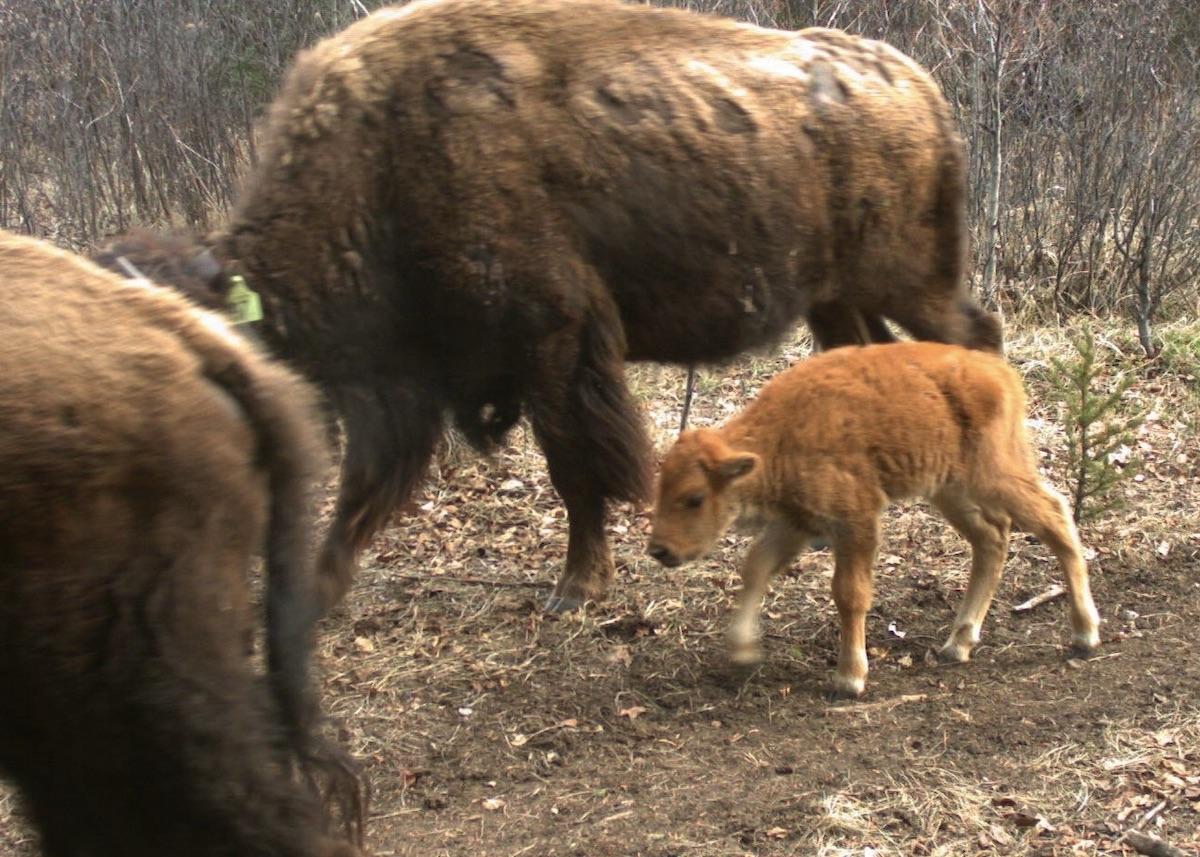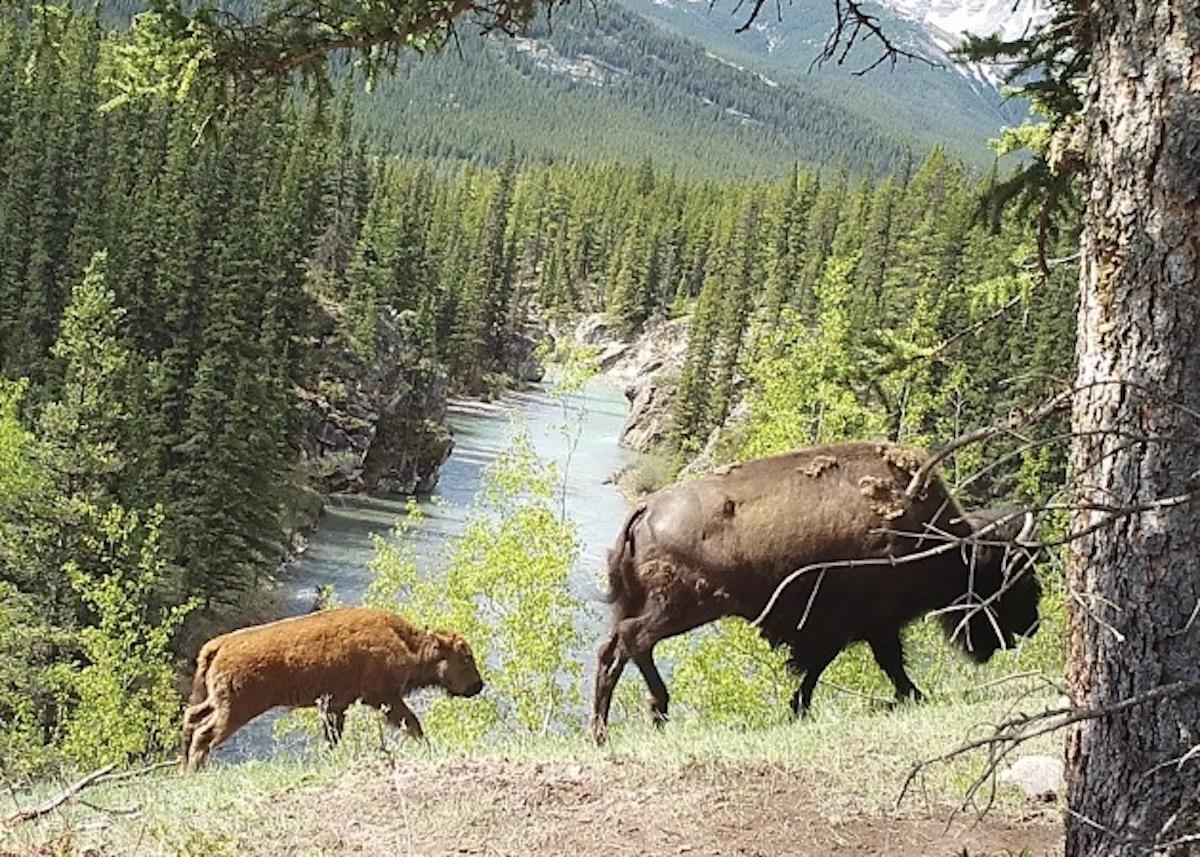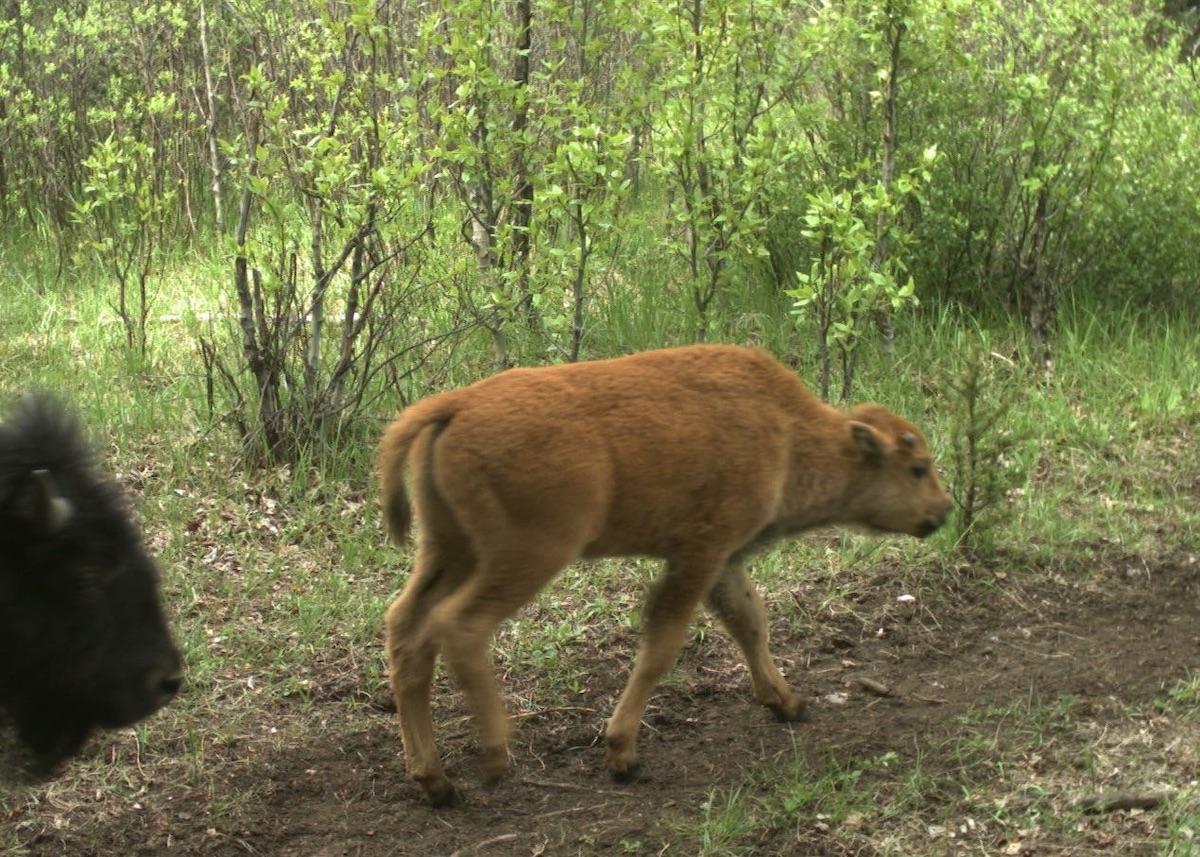
Banff National Park captured these shots of bison on its game cameras/Parks Canada
Parks Canada is recommending that bison remain in Banff National Park "in a controlled and measured form.”
The agency made history in 2017 by reintroducing a herd of 16 plains bison from Elk Island National Park to Banff’s eastern slopes. Now there are more than 80 animals and Parks Canada is seeking input on its "Report on the Bison Reintroduction Pilot 2017-2022." A 30-day public engagement opportunity is now open for Indigenous groups, stakeholders and the public to share feedback and comments on the draft via email to [email protected] by Dec. 14.
The draft says that the bison remained healthy and demonstrated a strong growth rate with minimal mortalities. They appear to have adapted quickly to the mountain habitat, and they remained — for the most part — within the park.
The bison were reintroduced in a remote backcountry area that sees little human use.
While a few backcountry visitors (mostly guides with clients) did see the bison during their wilderness experience, the existence of bison in the backcountry didn’t appear to increase visitation to this part of the backcountry. Remote trail cameras showed that annual human use (including Parks Canada staff) remained low, with fewer than 60 human events per year recorded in the heart of the reintroduction zone during the pilot period.
Parks Canada didn’t receive any visitor or stakeholder complaints about bison inside the park. Bison generally fled from occasional hiking groups and neither fled nor approached groups on horseback. Outside the park, a lone bull ventured into horse camps, which caused concerns among campers. It was euthanized as it continued to wander east, as per the Bison Excursion Response Plan.
The pilot helped Parks Canada strengthen relationships with several Treaty 7 Indigenous peoples, resulting in a traditional knowledge study, Indigenous youth filmmaking workshop, and annual Indigenous women's and youth hikes into the reintroduction zone.

Two bison are shown in Banff via game camera/Parks Canada
Bison population growth during the pilot project averaged 33 per cent per year and natural mortality was less than 1 per cent per year. The removal of four dispersing males over the five-year pilot was also about 1 per cent per year.
The story of bison reintroduction, and Parks Canada’s role in conservation, reached almost 120 million people.
A bison habitat assessment for the area was completed before the pilot began. It correctly predicted winter bison use of low-elevation meadows and the bison’s preference for forests burned in the last 15 years. However, it poorly predicted their habitat use in summer. The animals spent more time at higher elevations, on steeper slopes, in shrubs and further from water than expected.
“These trends were surprising and demonstrated a remarkable adaptability for animals that were translocated from a non-mountainous environment,” Parks Canada said.

A baby bison is captured on Banff's game camera/Parks Canada
The bison have consistently returned to high elevations during each peak growing season, which could be explained by an analysis of bison scat that found forage at high elevations to be nutritionally superior and more palatable to forage found at lower elevations in the summer.
The five-year bison reintroduction pilot set a strong foundation of knowledge and practice to support long-term feasibility, Parks Canada concluded. “With these positive findings, it is recommended bison remain on the landscape in the area in a controlled and measured form.”
The report, and engagement on it, is expected to help set the stage for bison management over the next 10 years and beyond.



Add comment